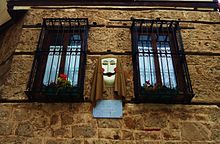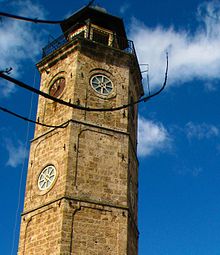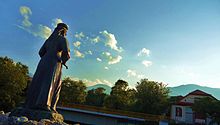- Naousa, Imathia
-
For a village on the island of Paros, see Naousa, Paros.
Naousa
Νάουσα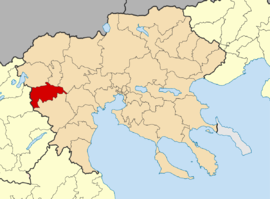

Location Coordinates 40°38′N 22°4′E / 40.633°N 22.067°ECoordinates: 40°38′N 22°4′E / 40.633°N 22.067°E Government Country: Greece Region: Central Macedonia Regional unit: Imathia Population statistics (as of 2001) Municipality - Population: 34,441 - Area: 424.9 km2 (164 sq mi) - Density: 81 /km2 (210 /sq mi) Municipal unit - Population: 34,441 - Area: 424.9 km2 (164 sq mi) - Density: 81 /km2 (210 /sq mi) Other Time zone: EET/EEST (UTC+2/3) Elevation (center): 330 - 450 m (-1,146 ft) Postal: 592 00 Telephone: 23320 Auto: ΗΜ Website www.naoussa.gr
Naousa (Greek: Νάουσα and historically Νάουσσα) is a city in the Imathia peripheral unit of Macedonia, Greece. Population 34,441. It is famous for its parks (Municipal Park, Park of Saint Nicholas etc) and for its ski resorts (3-5 Pigadia and Seli)The farmlands lie to the east, the forested and grovy area in the western part and the Vermion Mountains to the west. Peaches, apples, cherries and other fruits and crops are very famous in the low lying areas of the province. Naousa is agriculturally famous for its jam products which are sold under the Naoussa brand name. Its dry red wines are also well known, sold under the "Naoussa" denomination of origin.
Contents
Name
Naousa is known by several names in different languages. It is called "Негуш" (Negush) in Bulgarian and Macedonian Slavic, and "Niausta" in Aromanian. The name "Naoussa" is derved from the Latin: Nova Augusta.
Municipality
The municipality Naousa was formed at the 2011 local government reform by the merger of the following 3 former municipalities, that became municipal units:[1]
- Anthemia
- Eirinoupoli
- Naousa
History
The city is situated in ancient Emathia west of the ancient Macedonian town of Mieza and the site of ancient School of Aristotle. The area, according to Herodotus, was where the Gardens of King Midas were situated. Later, in the current position of the city, the Romans established the colony of Nova Augusta. The name changed through the centuries to Niagusta, Niaousta and Niaousa, until it became today's Naousa.
In 1705, an armatolos named Zisis Karademos led an ill-fated uprising in Naousa against the Ottoman authorities.
In 1822, the insurgence of the Greeks of Western Macedonia against the Turks came to a dramatic finale in Naousa. Abdul Abud, the Pasha of Thessaloniki, arrived on the 14th of March at the head of a 16,000 strong force and 12 cannons. The Greeks defended Naousa with a force of 4,000 under Anastasios Karatasos, Aggelis Gatsos, Tsamis Karatasos, Karamitsos and Philippos, the son of Zafeirakis Theodosiou, under the overall command of Zafeirakis Theodosiou and Anastasios Karatasos. The Turks attempted to take the town of Naousa on the 16th of March 1822, and on the 18 and 19 March, without success. On the 24th of March the Turks began a bombardment of the city walls that lasted for days. After requests for the town's surrender were dismissed by the Greeks, the Turks charged the gate of St George on Big Friday, the 31st of March. The Turkish attack failed but on the 6th of April, after receiving fresh reinforcements of some 3,000 men, the Turkish army finally overcame the Greek resistance and entered the city. In an infamous incident, as the rebels were abandoning the town, some of the women left behind committed suicide by falling down a cliff over the small river Arapitsa. Zafeirakis Theodosiou was pursued by a Turkish unit and was killed. The other Greek leaders retreated southwards. Abdul Abud laid the town and surrounding area to waste. The fall and massacre of Naousa marked the end of the Greek revolution in Macedonia in 1822.[2]
Naousa has a large population of Aromanians, also known as Vlachs, and a small Roma population.
Sporting teams
- Naoussa F.C. which played at First National Division of Greece for one year (season 1993-94)
International relations
Main article: List of twin towns and sister cities in GreeceTwin towns — Sister cities
Naousa, Imathia is twinned with:
 Asenovgrad, Bulgaria
Asenovgrad, Bulgaria Faches-Thumesnil, France
Faches-Thumesnil, France Naousa, Greece
Naousa, Greece Terrassa, Spain
Terrassa, Spain Bergama, Turkey
Bergama, Turkey Zgorzelec, Poland
Zgorzelec, Poland
Notable people
- Anastasios Michail (17th century-1722), theologian
- Zisis Karademos(17th century-1705), armatolos, led a rebellion
- Zafeirakis Theodosiou (18th century-1822), political leader
- Apostolos Giannou Footballer
See also
- List of communities of Imathia
References
- ^ Kallikratis law Greece Ministry of Interior (Greek)
- ^ John C. Vasdravellis, The Greek Struggle for Independence: The Macedonians in the Revolution of 1821 (1968), p. 123-24, 136
Area: 18,811 km² • Population : 1,874,214 (2001) • Capital: Thessaloniki Regional unit of Chalkidiki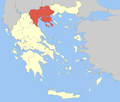 Regional unit of ImathiaAlexandreia • Naousa • VeroiaRegional unit of KilkisKilkis • PaioniaRegional unit of PellaRegional unit of PieriaDio-Olympos • Katerini • Pydna–KolindrosRegional unit of SerresRegional unit of ThessalonikiAmpelokipoi–Menemeni • Chalkidona • Delta • Kalamaria • Kordelio–Evosmos • Lagkadas • Neapoli–Sykies • Oraiokastro • Pavlos Melas • Pylaia–Chortiatis • Thermaikos • Thermi • Thessaloniki • Volvi
Regional unit of ImathiaAlexandreia • Naousa • VeroiaRegional unit of KilkisKilkis • PaioniaRegional unit of PellaRegional unit of PieriaDio-Olympos • Katerini • Pydna–KolindrosRegional unit of SerresRegional unit of ThessalonikiAmpelokipoi–Menemeni • Chalkidona • Delta • Kalamaria • Kordelio–Evosmos • Lagkadas • Neapoli–Sykies • Oraiokastro • Pavlos Melas • Pylaia–Chortiatis • Thermaikos • Thermi • Thessaloniki • VolviRegional governor: Panagiotis Psomiadis (el) • Website: www.pkm.gov.gr Categories:- Populated places in Imathia
- Municipalities of Central Macedonia
- Wine regions of Greece
Wikimedia Foundation. 2010.


